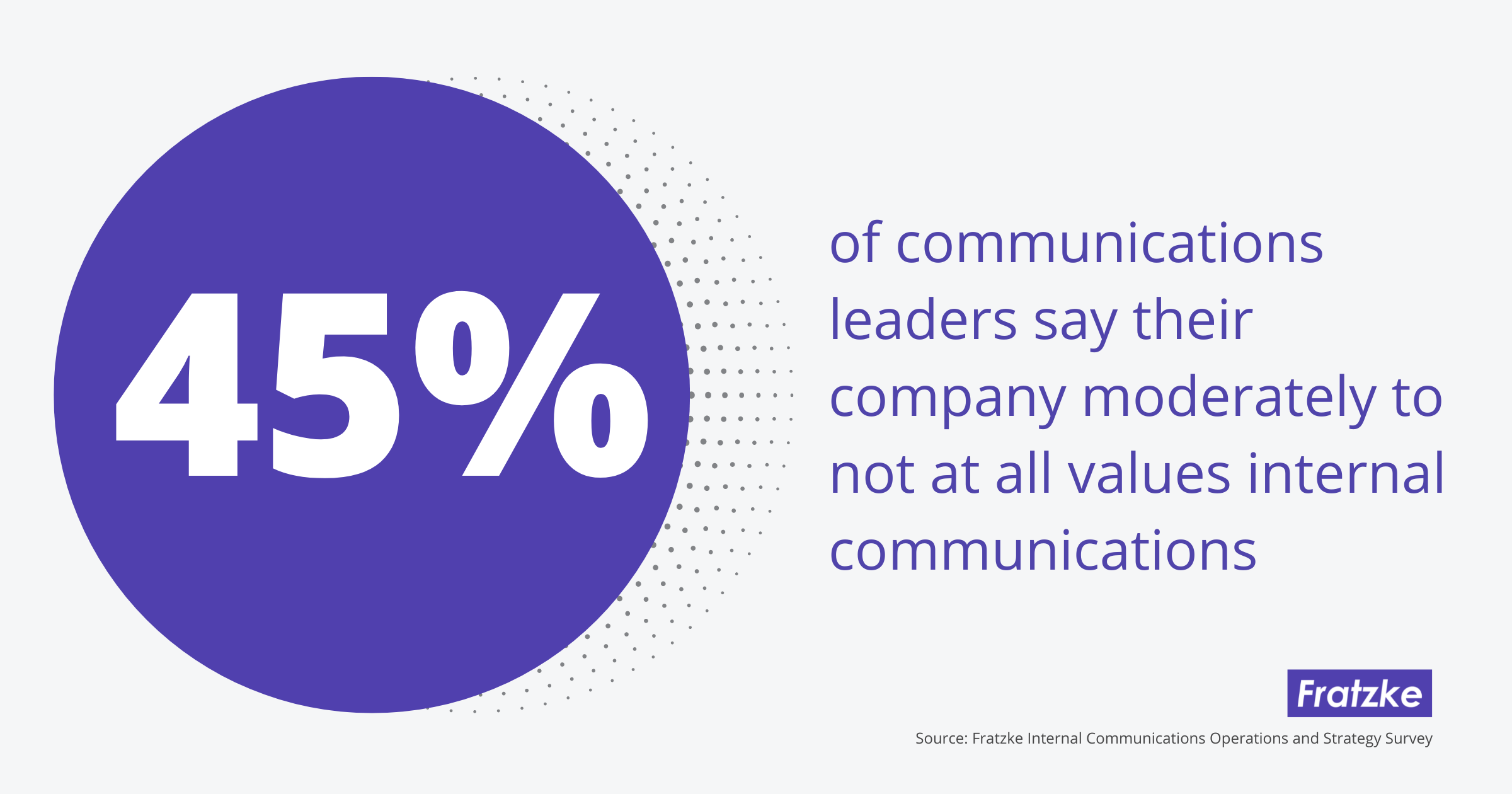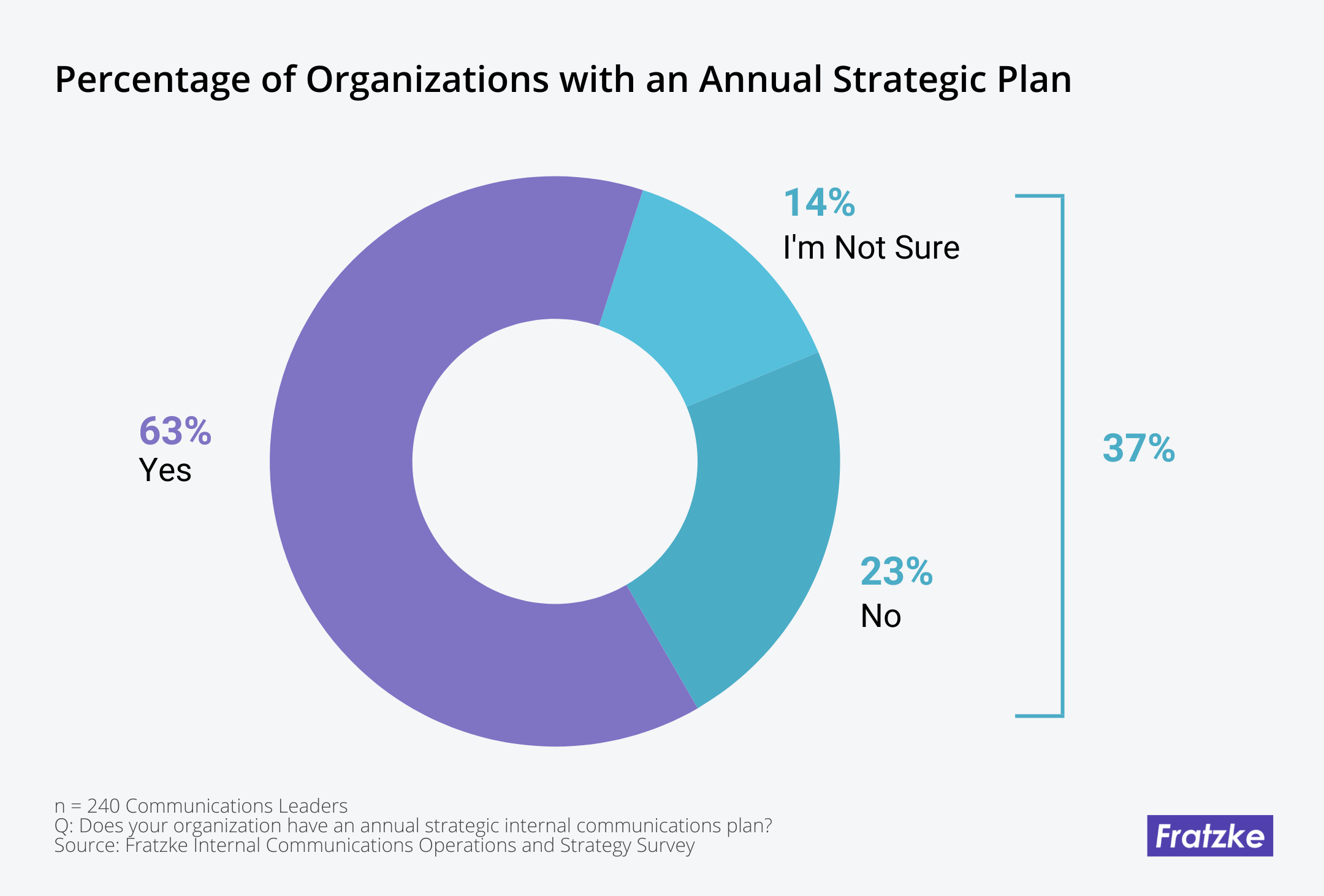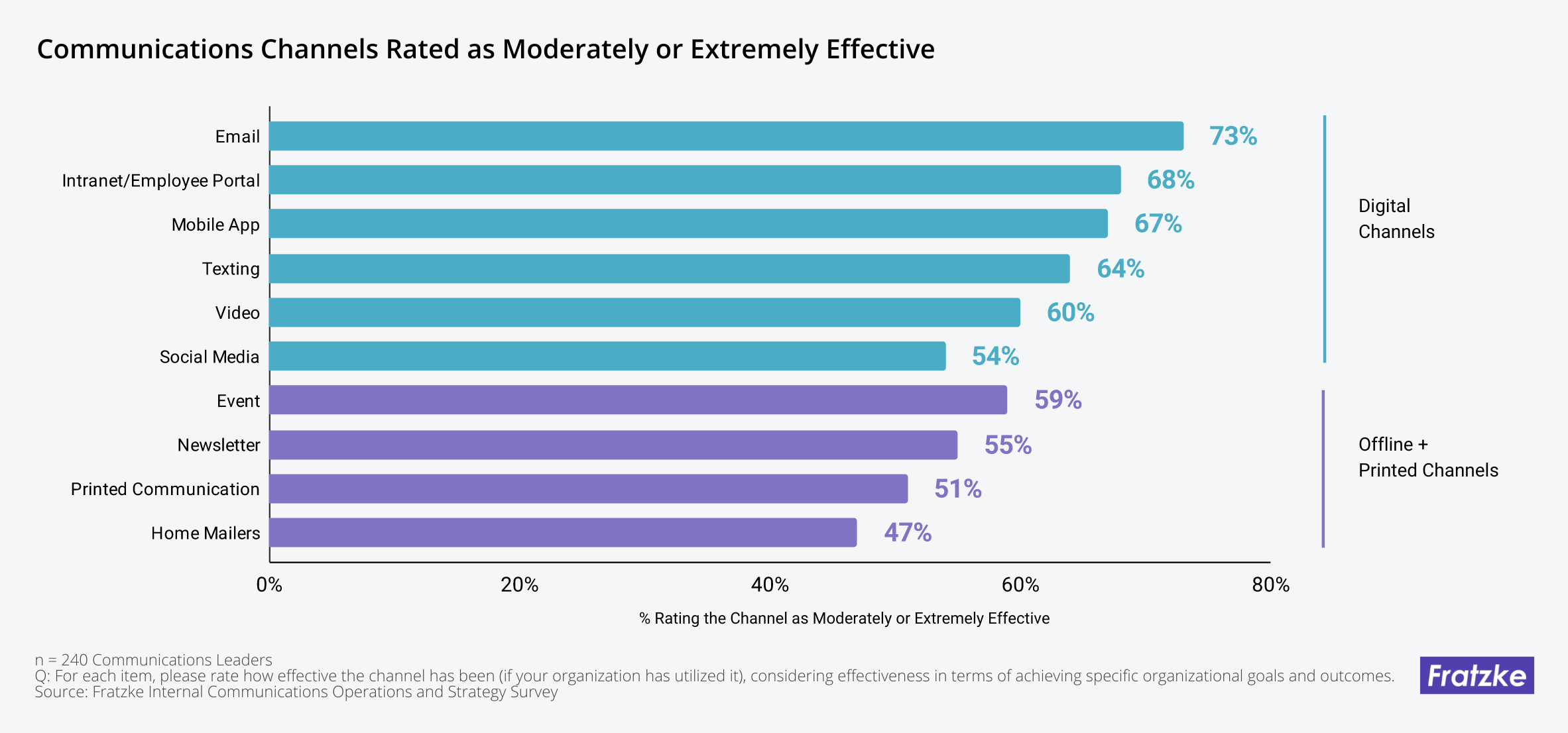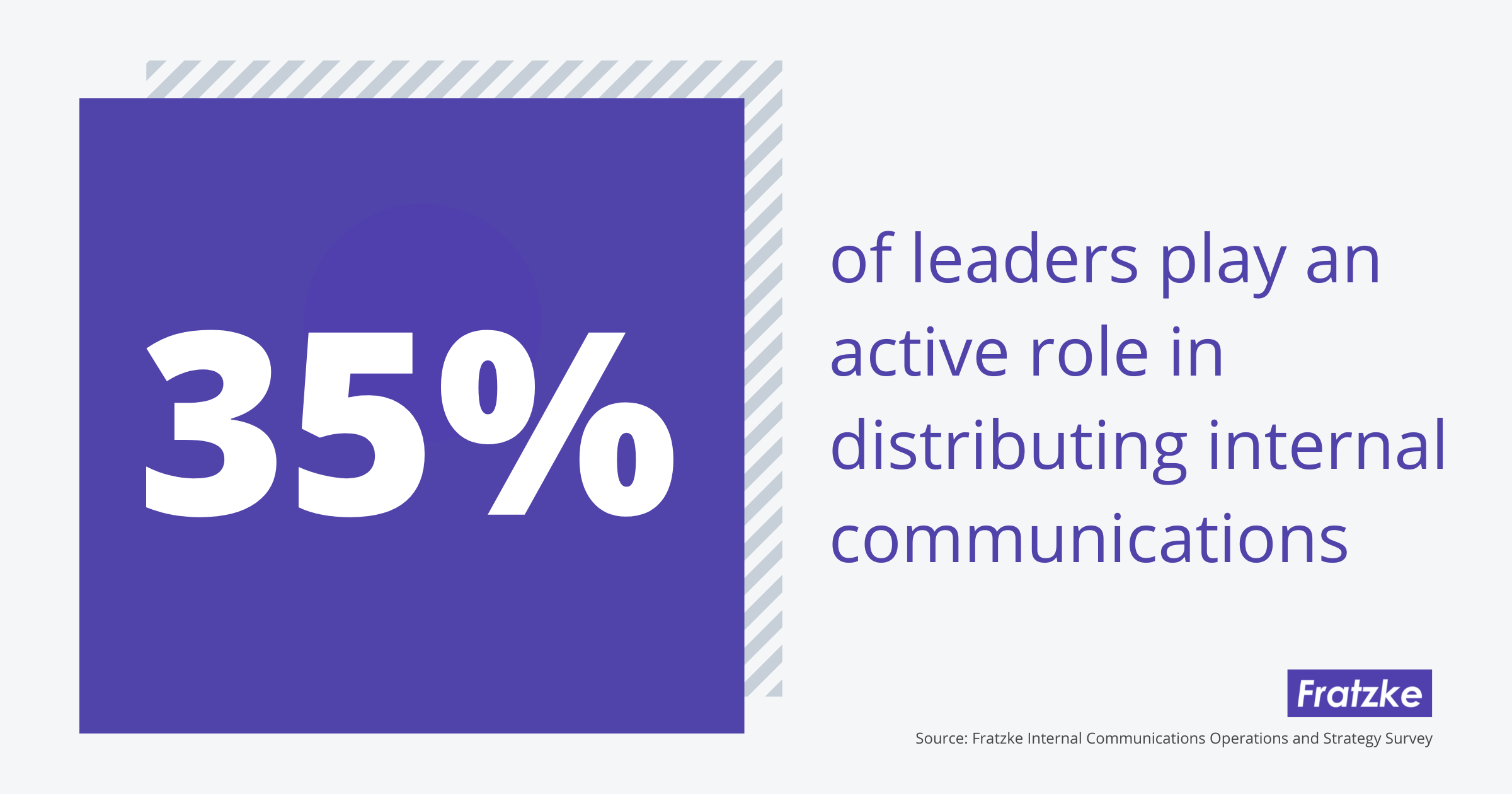With rapid workplace disruption over the past few years, how are internal communications teams evolving to meet this moment? What are the most difficult challenges communications leaders are facing? How are communications leaders measuring success?
New survey research from Fratzke Consulting, a human-centered strategic consulting firm that specializes in communications and culture, reveals key insights from communications leaders regarding the current landscape and how to best plan for the future.
Taking key insights from our research, these are five strategies that internal communications leaders should implement to level up their teams and performance.
Establish the Value of Internal Communications
Our research shows that communications leaders who feel most valued by their organizations also feel most equipped to navigate the current communications landscape. They are more satisfied with their performance (71%), more likely to use data to inform their internal communications decisions (61%) and more likely to have an annual strategic plan (71%).

According to our data, 45% of communications leaders say that internal communications is moderately to not at all valued by their organization. Communications leaders struggling to find their footing within companies that don’t value internal communications may be fighting an uphill battle. It’s essential for these leaders to communicate the value of internal communications to executive leadership to gain buy in.
One of the best ways to establish the value of internal communications is by sharing external data and gathering internal feedback and metrics on your communications performance to show the results you’ve been able to drive. Gaining valuable buy in will not only increase a communications team's ability to perform, but also the team’s overall satisfaction and retention.
Create an Annual Internal Communications Strategic Plan
Crafting an annual strategic plan is often seen as a “nice to have” versus a “need to have” for communications leaders who are scrambling to meet an onslaught of requests from executives and business partners. Our research shows that more than one-third of internal communications leaders don’t have an annual strategic plan.

When surveying communications leaders, the benefits of having an annual plan are clear. Those who have an annual strategic plan are more likely to:
- Have targeted strategies in place to reach employees with different role types (45% versus 13%) and locations such as remote and hybrid versus in person (82% versus 51%)
- Have a concrete strategy in place to capture dates to measure communication effectiveness (89% versus 44%) and use data to inform strategies (70% versus 28%)
- Regularly collect employee feedback (74% versus 7%)
Annual strategic plans give communications leaders the opportunity to proactively put plans in place to reach their audience, measure success and calibrate along the way.
Use Data to Inform Your Internal Communications Strategies
When it comes to crafting strategic communications, data is king. Our research shows a strong majority (85%) of communications leaders use data to inform their internal communications decisions and strategies. The three most popular types of data include internal surveys (54%), internal reporting and metrics (48%) and external data and research (43%).

Although internal surveys are some of the most utilized forms of data, communications leaders also listed a lack of feedback on the effectiveness of communications as a top challenge. The disconnect may be that although many leaders understand that surveying their workforce is valuable, it takes time and resources to do it right. Often, this will require an experienced specialist internally or externally to work with the internal communications team.
Inviting feedback from employees on the effectiveness of communications is a critical priority that will help inform strategic efforts to reduce these challenges and reach workers where they are.
Invest in Digital Communications Channels
When it comes to the most effective communication channels, digital channels top the list. Employees live in a digital-first, mobile-first world. Internal communications teams need to update their technology and invest in digital channels to provide a better user experience that matches employees’ external experience.
According to our research, leaders find these digital channels to be the most effective, with email (73%), intranet/employee portal (68%), mobile apps (67%) and texting (64%) topping the list.

Email and employee intranet are tried and true channels that are often successful at reaching employees who use a computer to do their work. The introduction of mobile apps and texting can be helpful in reaching employees who are on the go and in frontline roles that don’t often utilize computer screens.
Motivate Leaders to Play an Active Role
Leaders play a critical role in the communications process by closing the gap between communication distribution and the intended audience. Unfortunately, our survey data shows communications leaders often struggle with leadership engagement, with only about one-third (35%) of leaders playing a regular and active role in internal communications.

The value an organization places on internal communications is correlated with leader participation. Those organizations that value internal communications increase the ratio of leaders playing a regular and active role in distributing internal communications to 52%, but there is still room for improvement.
If communication organizations want to increase the success of communication efforts, they need to close the leadership gap with a proactive strategy to increase leadership engagement. This begins with establishing the value of internal communications with executive and salaried leaders, setting up accountability frameworks and providing the right tools to make it easy for leaders to engage.
In Conclusion
With rapid workforce disruption over the past few years, internal communications have never been more important in driving key company initiatives, including culture transformation, employee engagement and employee performance.
Our research findings provide clear, actionable takeaways that internal communications leaders can take back to their company leadership and teams to establish the value of internal communications within their organization and increase team performance.
Lisa FratzkeLisa Fratzke is a partner and executive strategist at Fratzke Consulting, specializing in helping clients achieve transformative growth through integrated communications, employee engagement and culture change. With over 15 years of experience with top brands, Lisa spent nearly a decade at The Walt Disney Company in public affairs and communications partnering with global business segments to communicate key reputation drivers and increase employee engagement and retention. Learn more about Fratzke Consulting, and find Lisa on LinkedIn.